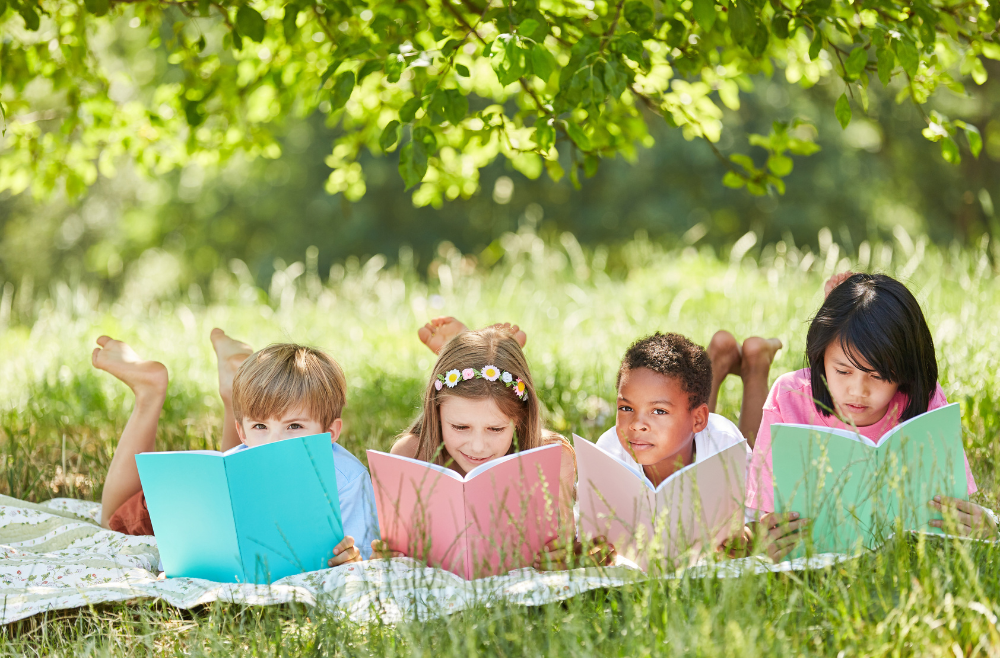Make Learning Stick with Summer Fun: How to Weave Education into Everyday Moments

When school’s out and the schedule loosens, learning doesn’t have to hit pause. In fact, some of the best learning happens outside the classroom—especially when it’s unexpected, engaging, and rooted in real-life experiences. You can use this summer season to sneak in meaningful learning moments that feel more like fun than work.
Here are some simple ideas to weave academic skills into everyday adventures, helping knowledge “stick” while letting your child enjoy the break!
1. Use Everyday Tasks to Build Critical Thinking
Summer is full of tasks that require planning, decision-making, critical thinking, and creativity. Whether it’s organizing a family picnic or planning a road trip, involve your child in the process:
- Meal planning invites them to read recipes, calculate servings, and compare prices at the grocery store.
- Packing for vacation becomes a logic exercise in organization, prioritization, and problem-solving.
- Chores like gardening teach cause and effect, sequencing, and science concepts in the most hands-on way.
The more children feel like active participants in family life, the more invested they become and the more opportunities they have to flex their academic muscles.
2. Make Language Skills a Game
Reading and writing don’t have to feel like school assignments. Try turning language-based tasks into summer games. Some ideas to try are:
- Playing “word hunts” on road signs or menus during outings.
- Writing postcards to friends and relatives that describe daily adventures and travel.
- Creating a family summer journal where each person writes an entry once a week.
Want to level up your child’s language? Choose a “word of the week” and challenge your child to use it in a sentence once a day. This small challenge builds vocabulary, comprehension, and expressive language. These skills support reading fluency and writing development across all grades.
3. Bring Math to Life
Math is everywhere in the day-to-day of summer. Whether you’re baking cookies, measuring space for a garden, or estimating time and distance during travel, opportunities abound to bring math into your already-planned activities.
For example, you can encourage your child to:
- Count money at the farmer’s market.
- Measure ingredients for a recipe.
- Estimate how many scoops of sand it takes to fill a beach bucket.
- Create a backyard “store” to practice addition, subtraction, or percentages with fake money.
Math becomes more meaningful and less intimidating when it’s tied to tangible, relatable experiences.
4. Take Learning on the Road
Every summer outing is an opportunity to expand one’s knowledge. Zoos, museums, aquariums, parks, and local historical landmarks offer opportunities for both academic enrichment and curiosity-building.
Turn each trip into a scavenger hunt for:
- New vocabulary words
- Fun facts
- Real-world applications of science, history, or math
Ask open-ended questions like, “What surprised you most today?” or “What do you want to learn more about?”
Helping children process and reflect makes learning stick. Their reflection will also help good memories linger for a long time to come!
5. Build in Unstructured Time
Brain development isn’t just about curriculum—it’s also about creativity. Let your child experience boredom. That’s when the magic of independent thinking, storytelling, and imaginative play kicks in. Free time is a vital part of cognitive development, providing children with space to synthesize ideas and practice self-regulation.
For even more ideas to encourage rich summer learning, check out this blog!
Mental engagement during the summer matters.
Students who stay intellectually engaged during summer are more confident when school resumes in the fall. They’re less likely to struggle with review and more likely to enter the classroom ready to participate and grow. And perhaps most importantly, they’ve experienced that learning isn’t confined to a desk or a textbook but rather has tangible applications.
At Best in Class Education Center, we want to see every child’s summer be a time for joy, connection, and growth. Our programs are designed to complement the kind of real-life learning you’re already doing at home, helping students reinforce core skills and build academic momentum.
Reach out to your local center to explore our flexible summer programs, designed to keep minds sharp and spirits high. Because learning that sticks is learning that starts with fun.

